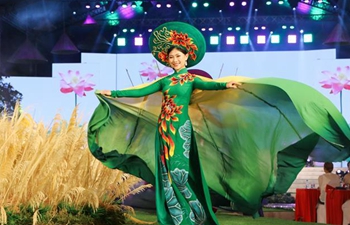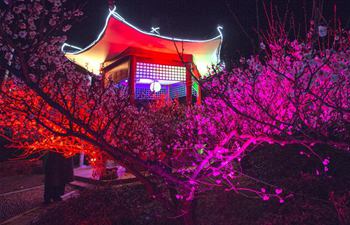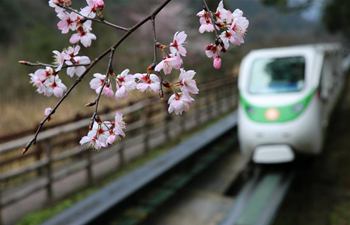GUIYANG, March 5 (Xinhua) -- Authorities plan to increase the population of South China tigers this year in southwest China's Guizhou Province, where the wild endangered tiger species is believed to have disappeared.
Ran Jingcheng, with the Guizhou provincial wild animal and forest plant management administration, said that 12 South China tigers will be introduced in Guizhou to "help rejuvenate the tiger population."
Currently, 117 South China tigers survive worldwide, about two-thirds of which are the offspring of tigers from Guizhou, Ran said.
"Most of these tigers bred in captivity were the offspring of the 5 tigers caught in Guizhou from 1958 to 1962 and a tiger captured in Fujian Province in 1970," Ran said.
Beginning in 2016, the Guizhou government listed increasing the South China tiger population to the government agenda.
"The plan is to introduce tigers from other provinces and help them reproduce in Guizhou," Ran said. "A national park will be built to train them in living skills until the tigers are able to survive in the wild."
The national nature reserve in Guizhou's Xishui County has a forest area that stretches more than 1,800 square km, providing a place with enough water and food for the tigers, Ran said.
"It's a perfect place to release the tigers," he said.
Indigenous to China, South China tigers used to be found across the country.
"In the 1950s, more than 400 tiger skins were purchased each year in China," Ran said. "In Guizhou alone, more than 100 skins were purchased each year."
But with the increase of guns and rising logging activity, their numbers dwindled, he said.
From 1960 to 1964, about 60 tiger skins were purchased each year on average, but in the 1970s, only one or two tiger skins were purchased each year.
Wild South China tigers were last seen in the Xishui nature reserve in the 1990s, Ran said.
"The tigers have been nowhere to be seen ever since," said Ran.
Efforts to breed more of the rare tigers are already under way. In February, a South China tiger cub was born in a wild animal park in Guizhou, the first cub of the endangered species successfully bred in Guizhou in four years.
The female cub, weighing 750 grams, was born to mother Meng Meng at Guizhou Forest Wildlife Zoo. In 2009, the zoo introduced four South China tigers from Shanghai, and two cubs were born in 2014, one of which is the newborn's father.
But the cub, born premature and with incomplete renal function, died 11 days after birth.
"The survival rate is less than 50 percent, so increasing the South China tiger population will take a long time," Ran said. "But since we have embarked on the journey, we will not stop."
"Maybe in 30 years, the tigers will roam in the forests in Guizhou again," Ran said.

















